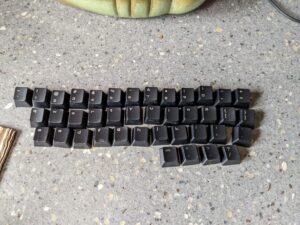One of the greatest strengths of my generation (and the following generations) is that, by and large, if we don’t know how to do something, we just look it up. The internet has put most skill sets a few searches and minutes or hours of research away. Don’t know how to format that file for your presentation? The internet can tell you. Don’t know how to make a resume? The internet has plenty of examples. Don’t know how to change the oil in your car? The internet has plenty of tutorial videos, probably even has one for your make and model.
So why do I bring this up? Because there are plenty of programming things that I have no idea how to do. And so I go look it up. And I usually find a way to do what I am trying to do. Or a way to do a similar thing that gets the job done. Along the way I usually find at least one thing I wasn’t looking for, I didn’t know, and could be very useful.
So, onto the point. I have been getting close to the finish of my game… and finding these last few steps the most annoying, mostly by virtue of going in blind. The step I am working on now is integrating adds into my game, so that I can hopefully make some money from this. But, as the title suggests, the first tutorial I found to do this was out of date. The tutorial was less than a year old, and at first it only looked like some cosmetic UI changes had been made in the process since the tutorial was made. But… once I got to the coding part of the process, everything started returning errors. That is when I knew something was wrong.
But As stated above, I just searched again. Quickly I learned that the tutorial I was using was for version 3 of the integration and the current version was 4.3. Understandably the process had changed significantly. But a new tutorial was quickly found, and the fundamentals were largely the same. It just used different tools to accomplish the same thing. Importantly the new version did allow for more control. However even the old tutorial was not a waste of time. As I learned a useful bit of programming to do something I didn’t know how to do (but which I knew must be possible). And, as with the old tutorial, the new also taught me something I didn’t know. But more importantly this new tutorial explained why it would be useful. After all, simply knowing something is no where near as useful as understanding it.





